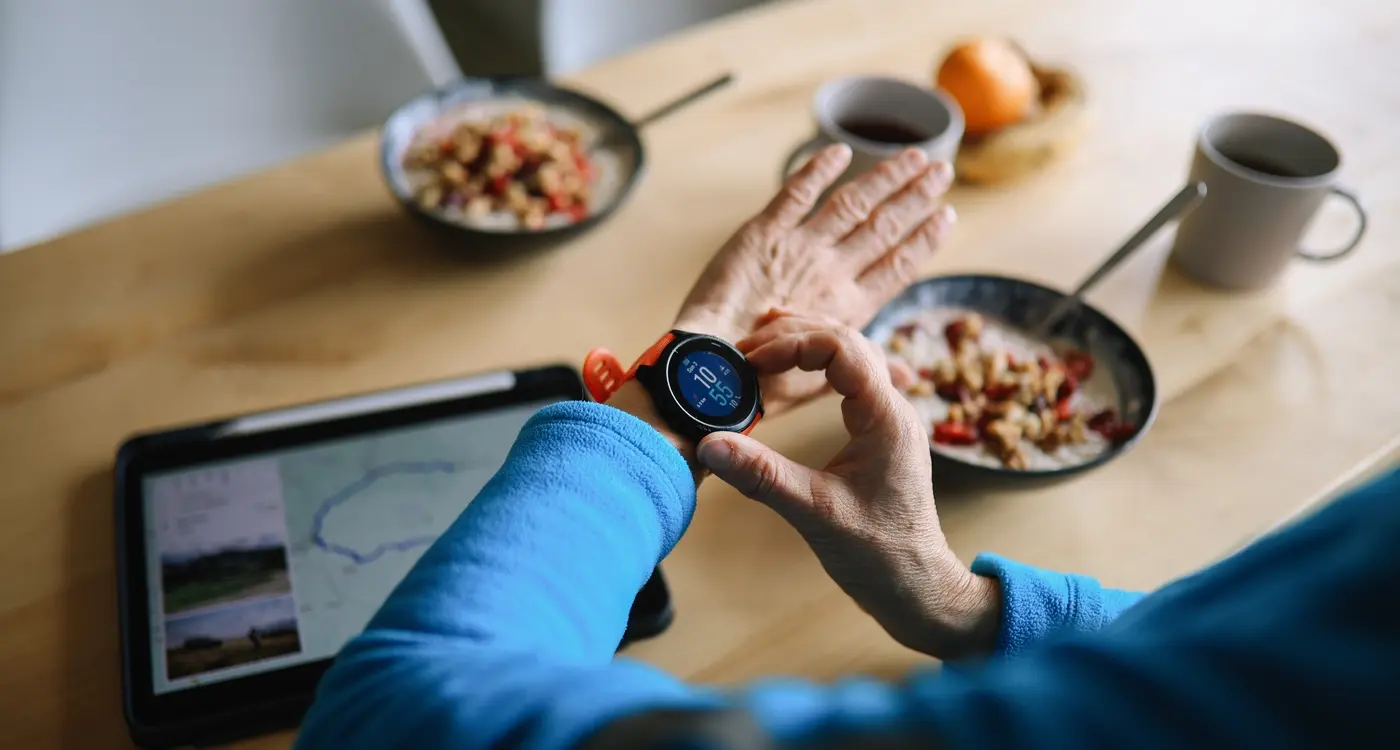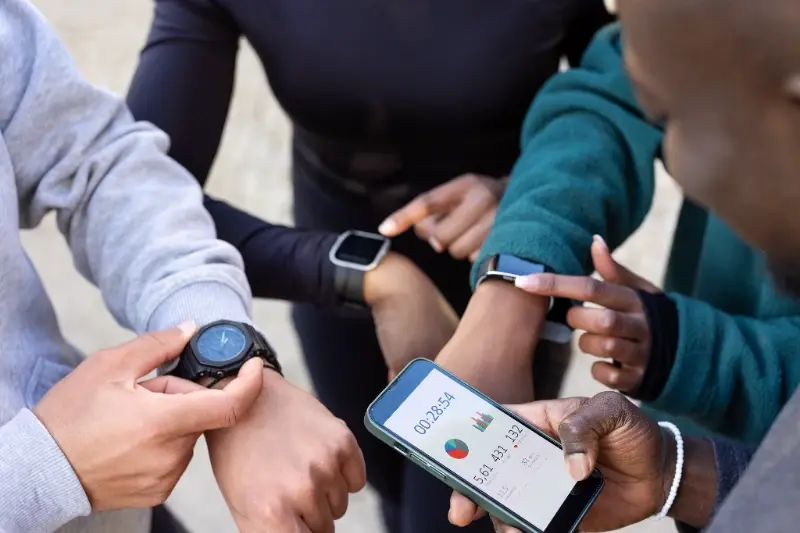Entertainment App Trends 2025: What Users Want From Their Media Apps
By the end of 2025, the average person will spend over 4 hours daily consuming media through apps—that's more time than we spend sleeping. The entertainment industry has shifted completely, and if you're building a media app right now, you need to understand what users actually want from their digital entertainment experiences.
I've spent years working with entertainment companies, streaming services, and content platforms, and the changes we've seen in user behaviour are remarkable. People don't just want to watch or listen anymore; they want to interact, personalise, and connect. The days of passive consumption are fading fast, replaced by users who expect their apps to understand them, engage them, and adapt to their preferences in real-time.
Users today don't choose apps based on what content they have—they choose based on how well the app understands what they want to watch, when they want to watch it, and how they want to experience it
The entertainment app market has become incredibly competitive. New platforms launch monthly, established players are constantly updating their features, and user expectations keep rising. What worked in previous years won't cut it anymore—users have too many options and too little patience for apps that don't deliver exactly what they're looking for. Understanding these evolving preferences isn't just helpful for developers; it's absolutely necessary for survival. The trends shaping entertainment apps right now will determine which platforms thrive and which ones disappear into the digital graveyard of forgotten apps.
The Rise of Interactive Entertainment Features
Gone are the days when entertainment apps were purely passive experiences. Users don't just want to sit back and watch anymore—they want to participate, influence, and shape what they're consuming. This shift towards interactive entertainment has completely changed how we think about media apps and what makes them successful.
The most obvious example is live streaming platforms where viewers can chat, vote on outcomes, or even direct what happens next. But it goes much deeper than that. Music apps now let users create collaborative playlists with friends; video platforms offer choose-your-own-adventure style content; and gaming elements are being woven into everything from fitness apps that keep users motivated to educational content.
Popular Interactive Features Users Love
- Real-time polls and voting during live content
- Comment reactions that appear on screen
- Collaborative playlist creation and editing
- Interactive quizzes and trivia during shows
- Augmented reality filters and effects
- Voice commands and gesture controls
- Community challenges and competitions
What's driving this change? Users, especially younger ones, have grown up with technology that responds to them. They expect their entertainment to be a conversation, not a lecture. They want to feel like they're part of the experience rather than just observers.
From a development perspective, these interactive features create stronger user engagement and longer session times. When people feel actively involved, they're less likely to switch to another app or get distracted. The data shows that stellar apps with interactive elements see significantly higher retention rates—and that's something every entertainment app should be paying attention to.
Personalisation Through AI and Machine Learning
Users expect their entertainment apps to know them better than they know themselves—and honestly, that's not as creepy as it sounds when done right. AI and machine learning have moved beyond basic recommendation engines that suggest "because you watched this, try that" content. Modern entertainment apps are building comprehensive user profiles that consider viewing times, device preferences, mood patterns, and even how quickly someone scrolls past certain content types.
The data tells us that personalised experiences can increase user engagement by up to 40%. That's a massive jump, and it makes perfect sense when you think about it. Nobody wants to waste time hunting through endless content libraries when their app could simply surface exactly what they're in the mood for.
Smart Personalisation Features Users Actually Want
The most successful apps aren't just throwing AI at every feature—they're being strategic about where personalisation adds real value. Here's what we're seeing work well:
- Dynamic homepage layouts that change based on time of day and user behaviour
- Mood-based content suggestions using viewing history and interaction patterns
- Personalised notification timing that respects individual usage habits
- Custom content categories that evolve with changing interests
- Smart download suggestions for offline viewing based on upcoming travel or commute patterns
The key difference between good and great personalisation is transparency. Users want to understand why they're seeing certain suggestions and have control over their data. Apps that explain their recommendations and offer easy preference adjustments tend to build stronger user trust and engagement.
Give users granular control over their personalisation settings. A simple "why am I seeing this?" feature with the option to adjust preferences can dramatically improve user satisfaction with your AI recommendations.
Short-Form Content Takes Centre Stage
We're seeing a massive shift in how people consume entertainment content, and it's all about bite-sized videos. Users want quick hits of entertainment that they can watch between meetings, on the bus, or whilst waiting for their coffee. The days of sitting down for hours to watch lengthy content are becoming less common—especially on mobile devices.
Entertainment apps that ignore this trend do so at their peril. People's attention spans aren't getting longer, and they're increasingly choosy about where they spend their time. Short-form content gives users exactly what they want: instant gratification with minimal commitment.
What Makes Short-Form Content Work
The magic isn't just in the length—it's in how quickly content can hook viewers and deliver value. Successful entertainment apps are focusing on content that grabs attention within the first few seconds and maintains engagement throughout. This means creators are getting better at storytelling, comedy, and education in compressed timeframes.
Apps are also making it easier for users to create their own short content. The tools are becoming more sophisticated whilst remaining simple to use. Filters, effects, and editing features that once required professional software are now available at the tap of a button.
Platform Features That Support Short Content
- Auto-play functionality that keeps users engaged
- Seamless scrolling between different pieces of content
- Quick sharing options for social media platforms
- Simple editing tools built into the app
- Algorithm-driven feeds that learn user preferences
The apps that are winning in this space aren't just hosting short content—they're building entire ecosystems around it. They're making discovery easy, creation accessible, and sharing effortless. That's what users really want from their entertainment apps.
Social Features That Actually Matter
Here's the thing about social features in entertainment apps—most developers get them completely wrong. They think adding comments and likes will magically turn their app into the next big social platform. But users aren't looking for another Facebook; they want meaningful ways to connect over the content they love.
The social features that actually work are surprisingly simple. Co-watching has become huge—letting friends watch videos together while chatting in real-time, even when they're miles apart. It's not just about the technology; it's about recreating that feeling of watching telly with your mates on the sofa. Gaming apps have nailed this with features like shared playlists and music sharing that don't feel forced or overwhelming.
Quality Over Quantity in Social Connections
Smart apps are moving away from public comments sections (which let's face it, can be a bit of a nightmare) towards more intimate sharing options. Private watch parties, small group recommendations, and direct messaging about specific content work much better. Users want to share their favourite moments with people they actually care about—not broadcast to strangers.
The best social features feel invisible until you need them, then they're exactly where you expect them to be
What's really interesting is how successful apps handle user-generated content. Instead of asking everyone to become creators, they give users easy ways to contribute—quick ratings, mood-based recommendations, or simple reaction tools. This approach means more people participate without feeling pressured to produce content they're not comfortable creating.
The Push for Accessibility and Inclusion
Entertainment apps are finally catching up with what disabled users have been asking for all along—proper access to content. We're talking about real changes here, not just token gestures. Streaming platforms are adding audio descriptions that actually describe what's happening on screen; music apps are including visual indicators for audio cues; gaming apps are building in voice controls and haptic feedback that makes sense.
The shift isn't just about doing the right thing (though that's important too). There are over one billion people worldwide living with disabilities, and they represent a massive audience that entertainment companies can't afford to ignore. When Netflix started investing heavily in audio descriptions and closed captions, they weren't just being nice—they were being smart.
What Users Really Need
The most successful entertainment apps now include features that work for everyone. Voice control that lets people navigate without touching their screen. Customisable text sizes that go beyond the tiny, small, medium options. Colour contrast settings that make content readable for people with visual impairments. High contrast mode, screen reader compatibility, and keyboard navigation support.
- Audio descriptions for video content
- Closed captions and subtitles in multiple languages
- Voice control and screen reader compatibility
- Customisable text sizes and colour contrast
- Haptic feedback for important interactions
- Alternative input methods for different motor abilities
What's interesting is how these accessibility features often improve the experience for everyone. Captions help when you're watching something in a noisy environment. Voice controls are useful when your hands are busy. Large text options benefit anyone using their phone in bright sunlight. Good accessibility design is just good design, full stop.
New Monetisation Models Users Accept
The days of users happily paying £4.99 upfront for an app are long gone—and frankly, good riddance! What we're seeing now is a shift towards monetisation models that actually make sense for both users and developers. People want to try before they buy, and they want payment structures that match how they actually use apps.
Freemium models have evolved beyond the basic "pay to remove ads" approach. Users are now comfortable with tiered subscriptions that unlock specific features rather than everything at once. Think of it like a gym membership where you can access the pool for an extra fiver a month—you only pay for what you'll actually use.
What Actually Works
The most successful entertainment apps are using hybrid approaches that give users genuine choice in how they engage with content. Here's what users are responding well to:
- Time-limited premium trials (7-14 days seems to be the sweet spot)
- Feature-specific subscriptions rather than all-or-nothing packages
- Ad-supported tiers with genuinely useful free content
- One-off purchases for premium content collections
- Flexible subscription pausing for seasonal users
What's interesting is how users have become more sophisticated about value. They'll pay for subscriptions that save them time or give them exclusive access, but they're ruthless about cancelling services that don't deliver ongoing value. The apps that succeed are transparent about costs upfront and make it easy to change subscription levels.
Always offer a meaningful free tier—users who can't experience real value won't convert to paid plans, no matter how cheap they are.
The key is matching your monetisation strategy to user behaviour patterns rather than trying to force users into payment models that suit your cash flow.
Quality Over Quantity in Content Delivery
I've worked with enough entertainment apps to know that more content doesn't always mean better engagement. Users are getting smarter about what they consume—and they're becoming increasingly picky about it too. The days of throwing everything at the wall to see what sticks are well and truly behind us.
What we're seeing now is a shift towards curated, high-quality content that actually serves a purpose. Users would rather have ten brilliant shows than a hundred mediocre ones cluttering up their recommendations. This means entertainment apps need to be more selective about what they offer and how they present it.
The Curation Challenge
Smart content curation isn't just about having fewer options—it's about having the right options. The most successful entertainment apps are using data to understand what their users genuinely want, not just what they might click on. There's a big difference between those two things, and getting it wrong can lead to high churn rates.
Quality-focused apps are also investing more in original content and exclusive partnerships rather than trying to be everything to everyone. This creates a stronger brand identity and gives users a clear reason to stick around.
Content Discovery Made Simple
The best entertainment apps make quality content easy to find. They use clean interfaces, smart search functions, and personalised recommendations that actually work. Here's what quality-focused content delivery looks like:
- Fewer, better-curated recommendations
- Clear content categories that make sense
- Quick preview options to help users decide
- Seamless browsing without overwhelming choice
- Regular content refreshes to maintain interest
When apps prioritise quality over quantity, users spend more time engaging with content and less time scrolling through endless options they don't want.
Conclusion
Looking ahead at entertainment app trends, it's clear that users aren't just asking for more content—they're demanding better experiences. The shift towards interactive features, personalised recommendations, and short-form content isn't just a passing fad; it's become the new baseline for what people expect from their media apps.
What strikes me most about these trends is how they all point to the same thing: users want to feel connected. Whether that's through social features that actually add value, AI that understands their preferences, or accessibility options that make everyone feel welcome, the common thread is creating genuine human connection through technology.
The monetisation models are evolving too—and frankly, it's about time. Users are more willing to pay for premium experiences when they can see clear value, but they're also savvy enough to spot manipulative tactics from miles away. The apps that succeed will be the ones that respect their users' intelligence and wallets.
As we move forward, the entertainment apps that thrive won't necessarily be the ones with the biggest budgets or the flashiest features. They'll be the ones that truly understand what their users want: quality content delivered in accessible ways, personalised experiences that don't feel invasive, and social features that bring people together rather than driving them apart. The bar has been raised, and there's no going back.
Share this
Subscribe To Our Blog
You May Also Like
These Related Stories

Fitness App Trends 2025: What Users Really Want From Their Workout Apps

Wearable Apps vs Mobile Apps: What's the Difference?





